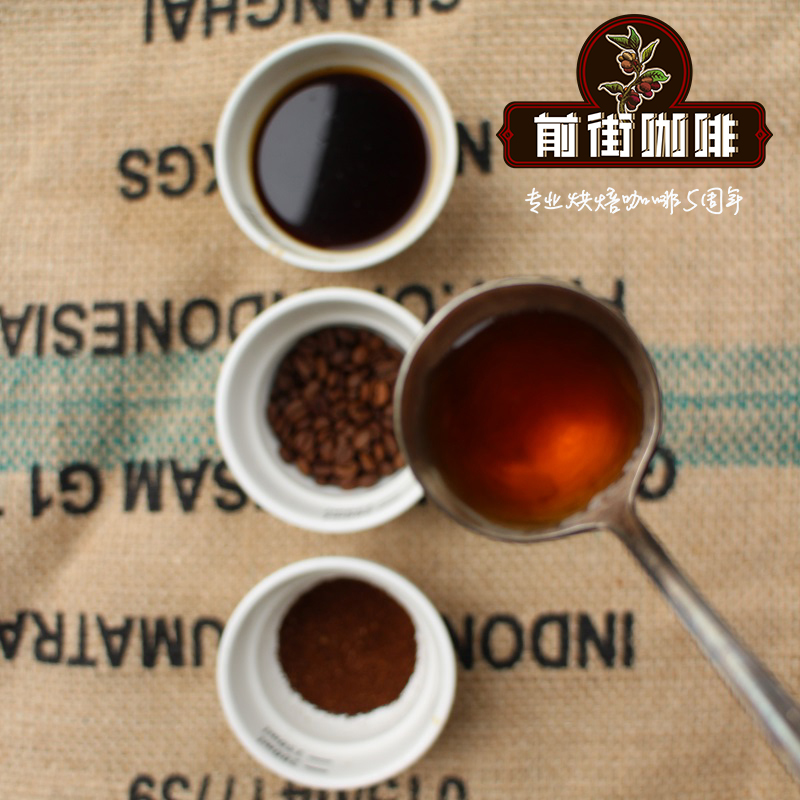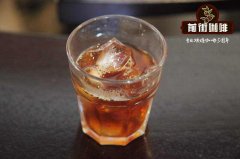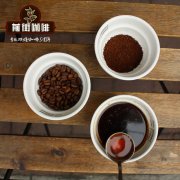What's the flavor of Sumatra Indonesian Java coffee beans? How is the story of Java coffee growing history

Professional coffee knowledge exchange more coffee bean information please follow the coffee workshop (Wechat official account cafe_style)
What's the flavor of Sumatra Indonesian Java coffee beans? What is the story of Java coffee growing history?
The common coffee in Indonesia can be divided into three common types: Sumatra Mantenin, Sulawesi Tonaga, Java and Muscat Coffee. Sumatra, Sumatra Mantenin, Mantenin and so on are all regulated on the island of Sumatra. At present, the best Java coffee is produced in Preanger, Cheribon, Buitenzorg and Batava. Java coffee has a mature, delicate, gentle taste, as well as an almost imperceptible spicy aroma, strong and mellow. It is more fragrant after aging, but not much in Java. Java is the area where coffee has been grown for the longest time outside the native place of coffee trees. The coffee tree was introduced to Java from Malabr in 1699 at the instigation of an Amsterdam mayor. Coffee produced in Celebes, Renri, Flores and Timor in the Indonesian archipelago is also sold as Java coffee. These coffee beans are as good as Java beans, but fresh beans are small and not easy to buy.
The total output of coffee in Indonesia is also among the largest in the world, and both Arabica and Robusta have a balanced scale, ranging from cheap to noble quality. In addition, Indonesia is made up of 17508 archipelago and is the largest archipelago country in the world, so it will be difficult to remember the actual territory of Indonesia. Sumatra is the sixth largest island in the world. Java coffee is also called Old Java because the moisture naturally dissipates during the long journey of coffee beans to New York, which makes the coffee beans well received in New York. The old Java has a stronger aroma, with a special musty smell and a rare light brown, which means that the real old Java is rare.
In areas below 3500 feet above sea level, there is actually no sign of Arabica coffee because of leaf disease. at present, the strong species of Nobasta, Lieberita, and the hybrid of these two kinds of coffee trees are in very good condition. Geographically, the main producing areas of boutique coffee in Mantenin, Sumatra are Aceh in the north and North Sumatra in the south of Aceh. The planting history of Aceh Province is more than 30 years earlier than that of North Soviet Province. The annual output of Aceh Province is about 30,000 tons, while that of North Jiangsu Province is nearly 50,000 tons at present.
The history of coffee cultivation in Sumatra can be traced back to the 18th century, when Indonesia was colonized by the Netherlands and planted in Arabica. Until World War II, the Japanese front continued to move south, during which time he came to Sumatra, where a Japanese soldier drank the coffee, and his mellow and complex taste made him ask in Japanese, "what kind of coffee is this?" But he spoke Japanese, and the local Mandaining people drew more hands under their feet and thought they were asking where they were from, so they replied, "Mandheling, Mandheling!" The Japanese thought the coffee was grown in Manning. After World War II, the Japanese recalled the coffee he had drunk in Sumatra, so he asked Indonesian businessmen to transport about 15 tons of coffee to Japan. Unexpectedly, the flavor he introduced was very popular in Japan. From then on, he established his status as the king of beans until the advent of the Blue Mountains in Jamaica.
A coffee tragedy in the mid-1970s transformed the status of Java in the hearts of coffee lovers. Local coffee farms have cut down all the excellent coffee trees of Elaraby (Arabica), which are less productive and vulnerable to insect pests, and plant sturdy beans with large yields and easy to take care of (Robusta Robusta). As a result, the excellent coffee that was popular all over the world at that time almost disappeared from the world. Today, there are only six state-owned farms on the island that are owned and managed by the government, and they still grow the traditional excellent Elaraby coffee trees in Java. Thanks to these state-owned farms, we still have a chance to taste the only remaining, Java Arabica coffee, which is already extremely limited.
Java and Sulawesi Tonaga were also introduced and planted in the same period. At present, Java coffee is mainly Robusta, so it is no longer elaborated. The flavor of Sulawesi Tonaga is similar to that of Mantenin, but the original Japanese drank Sumatra, not Sulawesi, so they missed out on fame. Because of the different fate, Sumatra has ample investment in agriculture, and even Japan's UCC owns a direct farm here, making today's Mantenin better.
Wind: sweet BlackBerry and grape, combined with slightly sour and bitter taste.
Bouquet: full-bodied and full-bodied, with a sweet nutty and clear balance of sour taste.
It: the coffee trees in Java used to grow coffee in Arabica, but most of them could not survive because of diseases and insect pests, so they changed to the strong Nobasta species, Lieberita species, and the hybrid of these two species.
Qianjie recommended cooking:
Filter cup: Hario V60
Water temperature: 88 degrees
Degree of grinding: small Fuji degree of grinding 4
Cooking methods: the ratio of water to powder is 1:15, 15g powder, the first injection of 25g water, 25 s steaming, the second injection to 120g water cut off, waiting for the powder bed water to half and then water injection, slow water injection until 225g water, extraction time about 2:00
Analysis: using three-stage brewing to clarify the flavor of the front, middle and back of the coffee. Because the V60 has many ribs and the drainage speed is fast, it can prolong the extraction time when the water is cut off.
Important Notice :
前街咖啡 FrontStreet Coffee has moved to new addredd:
FrontStreet Coffee Address: 315,Donghua East Road,GuangZhou
Tel:020 38364473
- Prev

What's the taste of Indonesian Java coffee? What are the characteristics of Java coffee? What's in Java coffee in Indonesia?
Professional coffee knowledge exchange more coffee bean information please follow the coffee workshop (Wechat official account cafe_style) how does Java coffee taste in Indonesia? What are the characteristics of Java coffee? What is the brand of Java coffee in Indonesia? At present, Indonesia is one of the largest coffee producers in the world, and about 2 million farmers and traders depend on it for a living. For Indonesian people, coffee is not available.
- Next

How many coffee producing areas are there in Java, Indonesia? How does Indonesian Java coffee taste? Java claw coffee
Professional coffee knowledge exchange more coffee bean information please follow the coffee workshop (Wechat official account cafe_style) how many coffee producing areas are there in Java, Indonesia? How does Indonesian Java coffee taste? What is the variety of Java Java coffee? 85% of Java coffee is produced in complex volcanoes near Ijen in the east of Java. The range of height suitable for coffee production is 3000 to
Related
- Detailed explanation of Jadeite planting Land in Panamanian Jadeite Manor introduction to the grading system of Jadeite competitive bidding, Red bid, Green bid and Rose Summer
- Story of Coffee planting in Brenka region of Costa Rica Stonehenge Manor anaerobic heavy honey treatment of flavor mouth
- What's on the barrel of Blue Mountain Coffee beans?
- Can American coffee also pull flowers? How to use hot American style to pull out a good-looking pattern?
- Can you make a cold extract with coffee beans? What is the right proportion for cold-extracted coffee formula?
- Indonesian PWN Gold Mandrine Coffee Origin Features Flavor How to Chong? Mandolin coffee is American.
- A brief introduction to the flavor characteristics of Brazilian yellow bourbon coffee beans
- What is the effect of different water quality on the flavor of cold-extracted coffee? What kind of water is best for brewing coffee?
- Why do you think of Rose Summer whenever you mention Panamanian coffee?
- Introduction to the characteristics of authentic blue mountain coffee bean producing areas? What is the CIB Coffee Authority in Jamaica?

